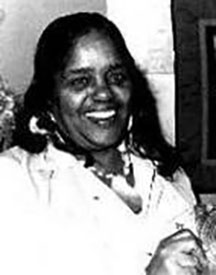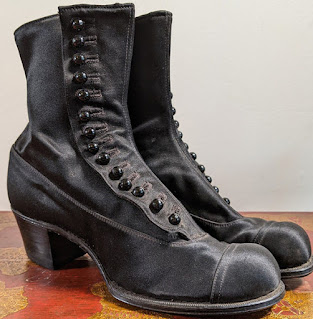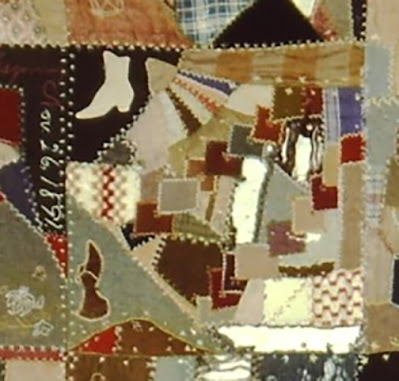High-button shoes are an unusual image for appliqued quilts.
This one in wine red and white is in Michigan
State University's Museum's Cuesta Benberry collection,
donated by the son of the quilt historian.
Cuesta Ray Benberry (1923-2007)
Mount Pleasant Cemetery, Grand Rivers, Kentucky
There's some mystery about Fannie's birthdate but her death certificate
tells us she died at 85 in 1955= born 1869 or 1870.
Fannie, born to Patsy Edmunds, married Jackson Cork.
The 1910 Census shows them living in Livingston County with
two children. They are farming in this rural area.
Ten years later they're farming in Brandon in Lyon County
and a Benberry grandson is living with them.
The African Americans in the neighborhood are Kentuckians
for several generations, most of the older people
undoubtedly born into slavery.
Paducah on the Ohio River is the city in the Livingston/Lyon area. The Corks lived in rural communities south and east of Paducah.
Almost-grown kids a little bit younger than George at the local Youngs Grove School
Cuesta located Fannie in Grand Rivers near the red
star up at the top of Kentucky Lake.
Land near the Tennessee & Cumberland Rivers once known as Between the Rivers is now Between the Lakes.
"came out way ahead" and moved to Indianapolis. George had moved to St. Louis, where he married Cuesta.
TVA Policy
Good for people who like to water ski---bad for local history.
We might look at Fannie's unusual quilt for a little more information.
Similar but pieced--- from the Florida project and the Quilt Index.
Owner who'd purchased the top thought it made about 1940 in
North Carolina.
I'd guess by the prints perhaps the 1950s or '60s.
Unusual image but there is some context.
Two shoes
Both crazy quilts from the Quilt Index
And another
Crazy quilts were the rage as Fannie was growing up.
Dated 1865, Winterthur Collection
Far from Paducah, New Yorkers added footwear to their albums,
possibly because shoe-making was a New York industry.
Left Sue Cummings book/Right Julie Silber's inventory
Closer to Kentucky was a regional fashion for shoes
in some 1880-1920 albums from the Miami River Valley in Ohio.
The Museum at Michigan State also has this
sampler quilt Cuesta made with
patterns associated with Black quiltmaking.
And a red shoe.
























No comments:
Post a Comment